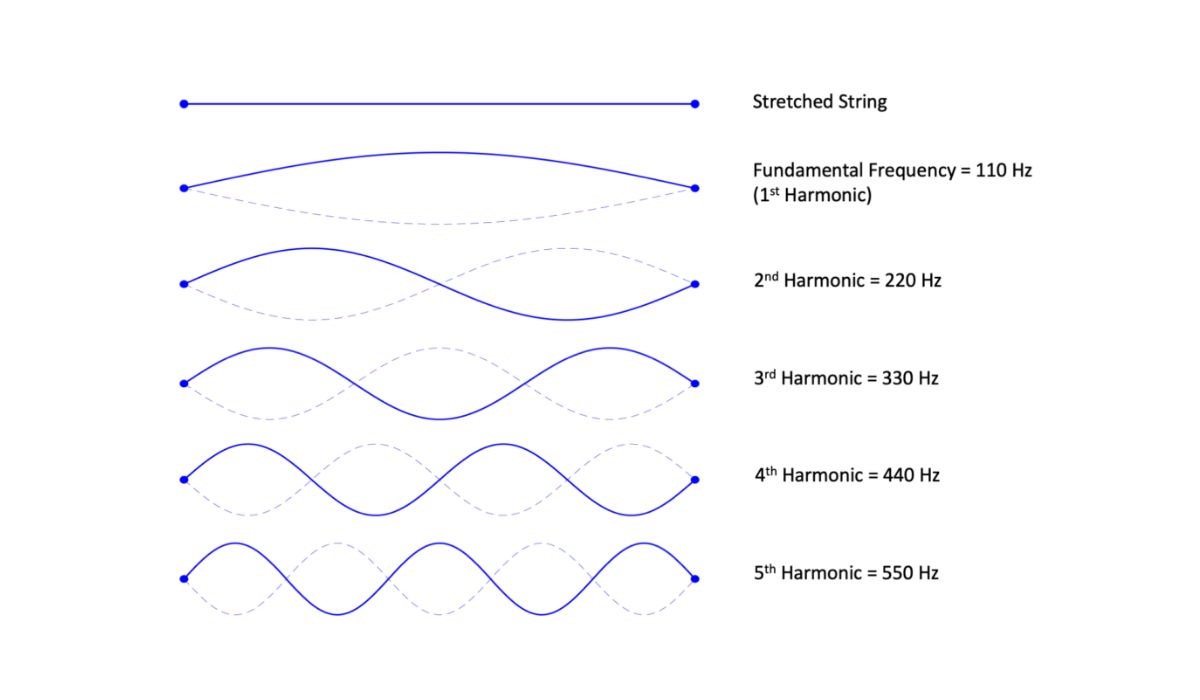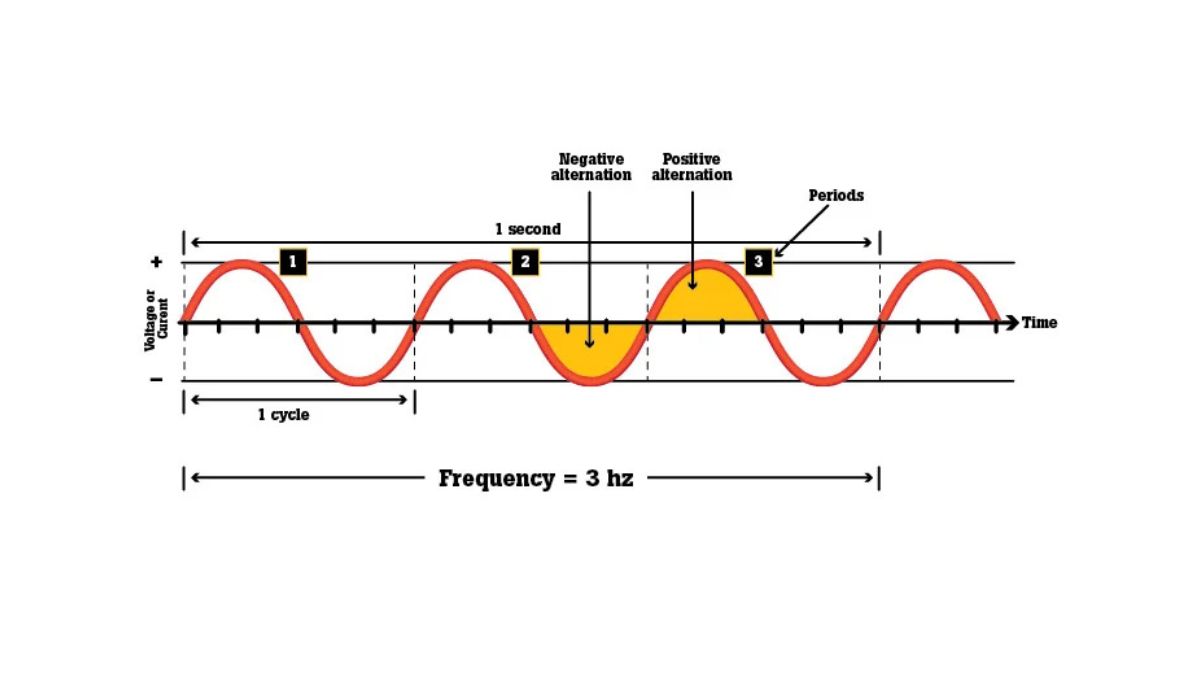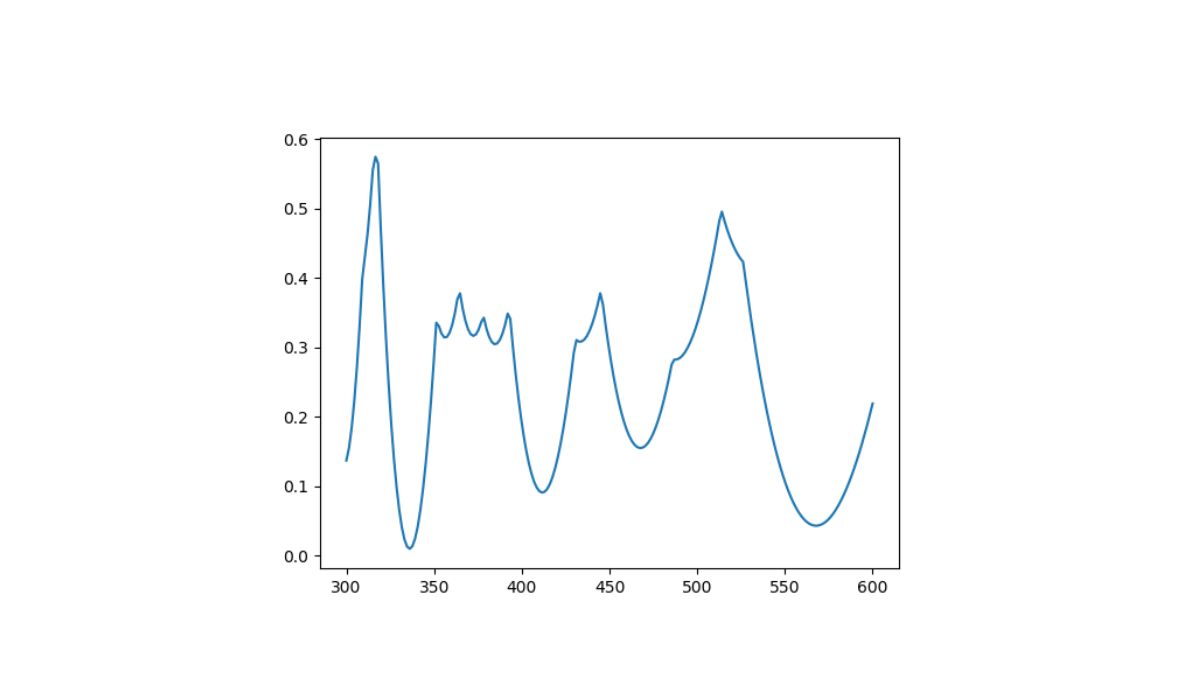Home>Events & Info>Frequency>How To Find The Frequency Of A Song


Frequency
How To Find The Frequency Of A Song
Published: February 18, 2024
Learn how to find the frequency of a song and understand the concept of frequency in music. Discover methods for analyzing and determining the frequency of any song. Gain insights into the science behind music frequency.
(Many of the links in this article redirect to a specific reviewed product. Your purchase of these products through affiliate links helps to generate commission for AudioLover.com, at no extra cost. Learn more)
Table of Contents
Introduction
Understanding the frequency of a song can enhance your appreciation and comprehension of music. Frequency, in the context of music, refers to the number of vibrations per second, which determines the pitch of a sound. It is a fundamental aspect of music theory and plays a crucial role in the creation and perception of melodies, harmonies, and rhythms.
In this article, we will explore various methods to find the frequency of a song. Whether you are a musician, a music enthusiast, or simply curious about the technical aspects of music, understanding frequency can deepen your understanding and connection to the songs you love.
By delving into the methods outlined in this article, you will gain practical insights into how to identify and analyze the frequency of a song. From using traditional tuners to leveraging modern software and mobile applications, there are multiple approaches to uncovering the frequency of a song. Each method offers its own unique advantages and can cater to different preferences and technological capabilities.
Let's embark on this journey to unravel the frequency of music, empowering you to explore the intricate nuances of your favorite songs and gain a deeper understanding of the musical world. Whether you seek to fine-tune your musical skills or simply satisfy your curiosity, the following methods will equip you with the tools to unveil the frequencies embedded within the melodies and harmonies that resonate with your soul.
Understanding Frequency in Music
Frequency is a fundamental concept in music that directly influences the perceived pitch and timbre of a sound. In musical terms, frequency is measured in hertz (Hz), with one hertz representing one cycle per second. The relationship between frequency and pitch is straightforward: higher frequencies correspond to higher pitches, while lower frequencies produce lower pitches.
When we listen to a song, we are essentially experiencing a complex interplay of frequencies. Melodies are composed of different pitches, each with its own frequency, and harmonies involve the simultaneous interaction of multiple frequencies. Understanding the frequency components of a song allows us to appreciate the intricate layers of sounds that contribute to the overall musical experience.
Frequency also plays a crucial role in rhythm and tempo. The rhythmic elements of a song are characterized by recurring patterns of beats, each with its own frequency. By identifying and analyzing these frequencies, we can gain a deeper understanding of the rhythmic structure of a song and how it contributes to the overall musical composition.
Moreover, frequency is integral to the timbre of musical instruments and voices. Timbre refers to the unique quality of a sound that distinguishes it from others, even when they have the same pitch and loudness. This distinctiveness is influenced by the harmonic content of a sound, which is directly related to its frequency components. By exploring the frequency makeup of different musical elements, we can develop a more nuanced appreciation for the timbral diversity present in music.
Overall, understanding frequency in music provides a gateway to unraveling the intricate tapestry of sounds that form the foundation of every song. It enables us to delve into the pitch, rhythm, and timbre of musical compositions, fostering a deeper connection with the artistry and technical craftsmanship behind the music we love.
Method 1: Using a Tuner
One of the traditional methods for finding the frequency of a song involves using a tuner. Tuners are widely used by musicians to ensure that their instruments are in tune, but they can also be utilized to identify the frequency of specific notes or pitches within a song.
To use a tuner, you can play the song on a device or instrument, and the tuner will display the frequency of the predominant pitch or note being produced. This method is particularly effective for identifying the frequency of individual notes, making it useful for musicians who want to analyze and understand the pitch content of a song.
There are various types of tuners available, including clip-on tuners for instruments, pedal tuners for stage use, and software-based tuners for computers and mobile devices. Each type offers its own advantages in terms of portability, accuracy, and additional features.
Using a tuner to find the frequency of a song provides a hands-on approach that allows you to interact with the music in real time. It can be a valuable tool for musicians, music students, and enthusiasts who want to gain a deeper understanding of the pitch elements present in a song. By using a tuner, you can pinpoint the frequencies of specific notes, chords, or melodies, shedding light on the musical intricacies that contribute to the overall sonic tapestry.
Whether you are a guitarist, pianist, vocalist, or simply someone with a passion for music, using a tuner to explore the frequencies within a song can be an enlightening and enriching experience. It offers a tangible way to engage with the musical content and unravel the pitch-based components that define the song’s sonic identity.
Method 2: Using Software
With the advancement of technology, using software to find the frequency of a song has become a popular and convenient method. There are numerous software applications designed specifically for analyzing and visualizing the frequency content of audio recordings, making it easier than ever to delve into the intricacies of a song’s sonic makeup.
Audio editing software, such as Adobe Audition, Audacity, and Reaper, often includes spectral analysis tools that allow users to view the frequency spectrum of a song in real time. These visual representations display the distribution of frequencies across the audio spectrum, enabling users to identify specific peaks and patterns that correspond to different musical elements.
Additionally, dedicated frequency analysis software, such as Sonic Visualiser and SPEAR, provides specialized tools for examining the frequency components of audio recordings with precision and detail. These programs offer advanced features for spectral manipulation, frequency isolation, and comparative analysis, empowering users to explore the frequency characteristics of a song at a granular level.
Using software to find the frequency of a song not only facilitates precise frequency measurement but also enables in-depth exploration of the harmonic and timbral qualities embedded within the music. By visualizing and analyzing the frequency spectrum, users can gain insights into the distribution of pitches, harmonics, and overtones present in the song, fostering a deeper understanding of its sonic structure.
Furthermore, software-based frequency analysis allows for the comparison of multiple songs, the identification of recurring frequency patterns, and the extraction of specific frequency ranges, opening up possibilities for detailed comparative studies and creative exploration of musical compositions.
Whether you are a music producer, sound engineer, or avid music enthusiast, utilizing software to uncover the frequency components of a song offers a dynamic and immersive approach to understanding its sonic characteristics. The accessibility and versatility of software-based frequency analysis make it a valuable tool for anyone seeking to unravel the intricate frequency nuances that define the musical landscape.
Method 3: Using a Mobile App
As smartphones have become ubiquitous in modern society, the availability of mobile apps for analyzing the frequency of songs has made this process more accessible than ever. Using a mobile app to find the frequency of a song provides a portable and user-friendly solution for exploring the sonic characteristics of music on the go.
There is a diverse range of mobile apps specifically designed for audio analysis, with features tailored to identify and visualize the frequency components of songs. These apps often utilize the device’s microphone to capture audio input, allowing users to analyze the frequency spectrum of live music or pre-recorded songs.
Some mobile apps offer real-time spectral analysis, displaying the frequency distribution of the captured audio in a visually intuitive manner. This enables users to identify peaks, patterns, and variations in the frequency spectrum, offering insights into the pitch content and harmonic structure of the music.
Additionally, certain mobile apps provide interactive spectrogram displays, allowing users to explore the frequency composition of a song through touch-based manipulation and zooming. This hands-on approach to frequency analysis enhances the user experience, making it engaging and educational for music enthusiasts and aspiring musicians.
Furthermore, mobile apps often incorporate additional features such as pitch detection, frequency range selection, and the ability to save and share frequency analysis results. These functionalities empower users to not only identify the frequency components of a song but also to engage in interactive exploration and documentation of their findings.
Whether you are attending a live concert, exploring nature’s symphony, or simply listening to your favorite songs, using a mobile app to analyze the frequency content of music offers a versatile and immersive experience. It allows you to connect with the sonic intricacies of the world around you, fostering a deeper appreciation for the frequencies that shape the musical landscape.
By leveraging the convenience and accessibility of mobile apps, anyone with a smartphone can embark on a journey to uncover the frequency components of the songs that resonate with them, enriching their understanding and connection to the music they love.
Conclusion
Exploring the frequency of a song opens a gateway to the intricate world of musical sound, offering insights into pitch, rhythm, and timbre that enrich our understanding and appreciation of music. The methods outlined in this article – using a tuner, software, and mobile apps – provide diverse and accessible approaches to uncovering the frequency components of songs, catering to the needs and preferences of musicians, music enthusiasts, and curious minds alike.
From the traditional use of tuners to the advanced capabilities of software-based frequency analysis and the convenience of mobile apps, each method offers unique advantages for delving into the sonic characteristics of music. Whether you are a musician seeking to fine-tune your performance, a music producer exploring sonic textures, or simply someone passionate about the art of sound, these methods empower you to engage with the frequencies that shape the musical landscape.
By understanding the frequency makeup of songs, we gain a deeper appreciation for the pitch elements that define melodies, the rhythmic patterns that drive our movements, and the timbral nuances that give each song its unique identity. This deeper understanding enhances our ability to connect with and interpret the music that resonates with us, fostering a more profound and meaningful relationship with the art form.
As technology continues to evolve, the accessibility and versatility of methods for finding the frequency of a song will undoubtedly expand, offering new opportunities for exploration and discovery in the realm of musical sound. Whether through traditional tools, sophisticated software, or user-friendly mobile apps, the journey to uncovering the frequencies within music remains an enriching and enlightening pursuit for all who embark upon it.
So, whether you’re a seasoned musician, an aspiring music producer, or simply a curious listener, embracing the exploration of frequency in music can deepen your connection to the songs that soundtrack your life, enriching your musical journey with newfound insights and appreciation.











